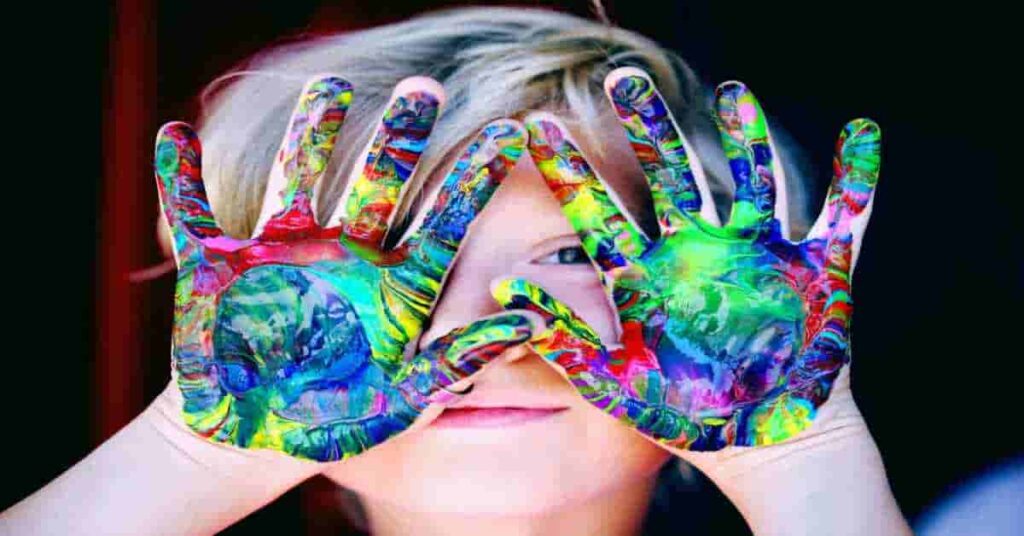Table of Contents
1 - Introduction
A. Importance of Drawing for Kids
B. Benefits of Encouraging Creativity
C. Overview of the Step-by-Step Guide
2 - Setting the Stage: Creating a Creative Environment
A. Designing a Kid-Friendly Art Space
B. Encouraging a Positive Mindset
C. Setting Realistic Expectations
3 - The Power of Imagination: Storytelling through Drawing
A. Encouraging Narrative Expression
B. Creating Characters and Settings
C. Group Drawing Activities
4 - FAQs
1. Introduction
Drawing for kids is not merely a fun pastime; it is a powerful tool for enhancing creativity and fostering cognitive development. As parents, guiding your children through the enchanting world of drawing opens up a realm of possibilities, nurturing their imagination and honing essential skills for their future. In this step-by-step guide, we will explore the significance of drawing for kids, delve into the multitude of benefits it offers, and provide parents with the tools and insights needed to become effective guides on this creative journey.
A. Importance of Drawing for Kids
Children are naturally drawn to artistic expression, and drawing provides a tangible outlet for their boundless creativity. Beyond being a source of entertainment, drawing plays a crucial role in the holistic development of a child. Through the strokes of a crayon or the glide of a pencil, children communicate emotions, ideas, and stories that might be challenging to express verbally.
Drawing engages various senses, promoting fine motor skills, hand-eye coordination, and spatial awareness. It acts as a medium for self-discovery, allowing children to explore their unique perspectives and understand the world around them. Moreover, it serves as a therapeutic activity, offering an avenue for emotional release and stress relief.
B. Benefits of Encouraging Creativity
Encouraging creativity in children through drawing yields a plethora of benefits that extend far beyond the canvas. It nurtures problem-solving skills as children imagine and devise solutions for their artistic challenges. Furthermore, drawing fosters patience and perseverance, instilling in children the importance of practice and refinement.
Drawing for kids can be helpful to making various shapes and lines, which lays the foundation for later writing skills. It helps children understand the basic concepts of writing, such as holding a pencil and forming letters.
Cognitively, engaging in artistic activities stimulates brain development, enhancing memory, attention span, and critical thinking. As children visualize and bring their ideas to life, they develop a deeper understanding of concepts such as spatial relationships and proportions. Creativity, cultivated through drawing, lays the foundation for innovative thinking and adaptability in various aspects of a child’s life.
C. Overview of the Step-by-Step Guide
This guide is designed to empower parents with the knowledge and tools necessary to guide their children through the exciting journey of drawing. From selecting the right drawing materials to introducing thematic drawing adventures, each section provides practical insights and actionable steps. Whether your child is a budding Picasso or just starting to explore their artistic inclinations, this guide is tailored to cater to various skill levels and preferences.
Embark on this creative adventure with your child, and witness not only the masterpieces they create but also the growth and confidence that blossom with each stroke of the pencil. Let’s delve into the world of drawing for kids, where imagination knows no bounds, and creativity knows no limits.
2. Setting the Stage: Creating a Creative Environment
Setting the right environment plays a pivotal role in nurturing your child’s artistic endeavors. This section focuses on designing a kid-friendly art space, encouraging a positive mindset, and setting realistic expectations for both parents and young artists.

A. Designing a Kid-Friendly Art Space
Create a dedicated art space that sparks inspiration and creativity. This could be a corner in their room, a table in the living area, or even an easel in the backyard. Ensure good lighting to enhance visibility and invest in storage solutions for organizing art supplies. Personalize the space with your child’s artwork, creating a sense of ownership and pride.
B. Benefits of Encouraging Creativity
Foster a positive attitude towards drawing by emphasizing the process over the outcome. Encourage experimentation and remind your child that there are no mistakes in art, only opportunities to learn and improve. Praise their efforts and creativity rather than focusing solely on the final result. A positive mindset towards art builds confidence and resilience in the face of challenges.
C. Setting Realistic Expectations
Understand and appreciate your child’s unique artistic journey. While it’s natural to be excited about their progress, avoid setting unrealistic expectations. Each child develops at their own pace, and comparing their work to others can stifle creativity. Celebrate small achievements, and be patient as they explore different styles and techniques. The goal is to create a supportive environment that encourages self-expression and creativity.
3. The Power of Imagination: Storytelling through Drawing
Moving beyond basic shapes and lines, unleashing your child’s imagination through storytelling is a captivating way to approach drawing. This section explores methods for encouraging narrative expression, creating characters and settings, and engaging in group drawing activities.
A. Encouraging Narrative Expression
Art becomes a powerful storytelling tool when children are encouraged to weave narratives into their drawings. Prompt them with open-ended questions that stimulate their imagination. Ask about the characters they want to create, the worlds they want to explore, or the adventures they envision. This not only enhances their storytelling skills but also transforms drawing into a means of personal expression.
B. Creating Characters and Settings
Guide your child in developing characters with distinct personalities, expressions, and traits. Discuss the importance of setting in a story and how it can be conveyed through the background of their drawings. Encourage them to think about the emotions they want to convey and how the characters interact with their environment. This process not only enhances creativity but also introduces storytelling elements that go beyond the visual aspects of drawing.
C. Group Drawing Activities
Foster a sense of collaboration and social interaction by engaging in group drawing activities. This could involve family members or friends joining in to create a collective masterpiece. Set themes for group drawings, encouraging participants to contribute different elements to the overall artwork. Group activities not only make drawing a social experience but also expose children to diverse perspectives and styles.
4. FAQs: Addressing Common Concerns
This FAQ section addresses common concerns parents may have when guiding their children through the world of drawing. From strategies for children who may not initially enjoy drawing to dealing with frustration and mistakes, this segment provides practical insights.
Q: My Child Doesn’t Like Drawing, What Should I Do?
If your child doesn’t express an immediate interest in drawing, don’t be discouraged. Introduce drawing in a playful manner, incorporating it into activities they enjoy. Experiment with different art materials and themes to discover what resonates with them. Sometimes, a change in approach or exposure to diverse artistic experiences can spark an interest.
Dealing with Frustration and Mistakes
Artistic endeavors inevitably come with moments of frustration. Teach your child that mistakes are a natural part of the creative process. Encourage them to see errors as opportunities to learn and improve. Provide constructive feedback and highlight the aspects they did well. Developing resilience in the face of challenges is a valuable life skill nurtured through artistic expression.
Balancing Screen Time with Creative Activities
In an age of technology, striking a balance between screen time and creative activities is essential. While digital drawing can be engaging, ensure that your child experiences the tactile pleasure of traditional drawing materials. Establish clear guidelines for screen time, designating specific periods for both digital and traditional artistic activities. This balance ensures a holistic approach to creativity.
More detail: By Amazon









1 thought on “Drawing for Kids: A Creative Playground for Enhanced Creativity.”
You have a way of making each of your readers feel seen and heard That's a special quality that not all bloggers possess Thank you for creating a safe space for us